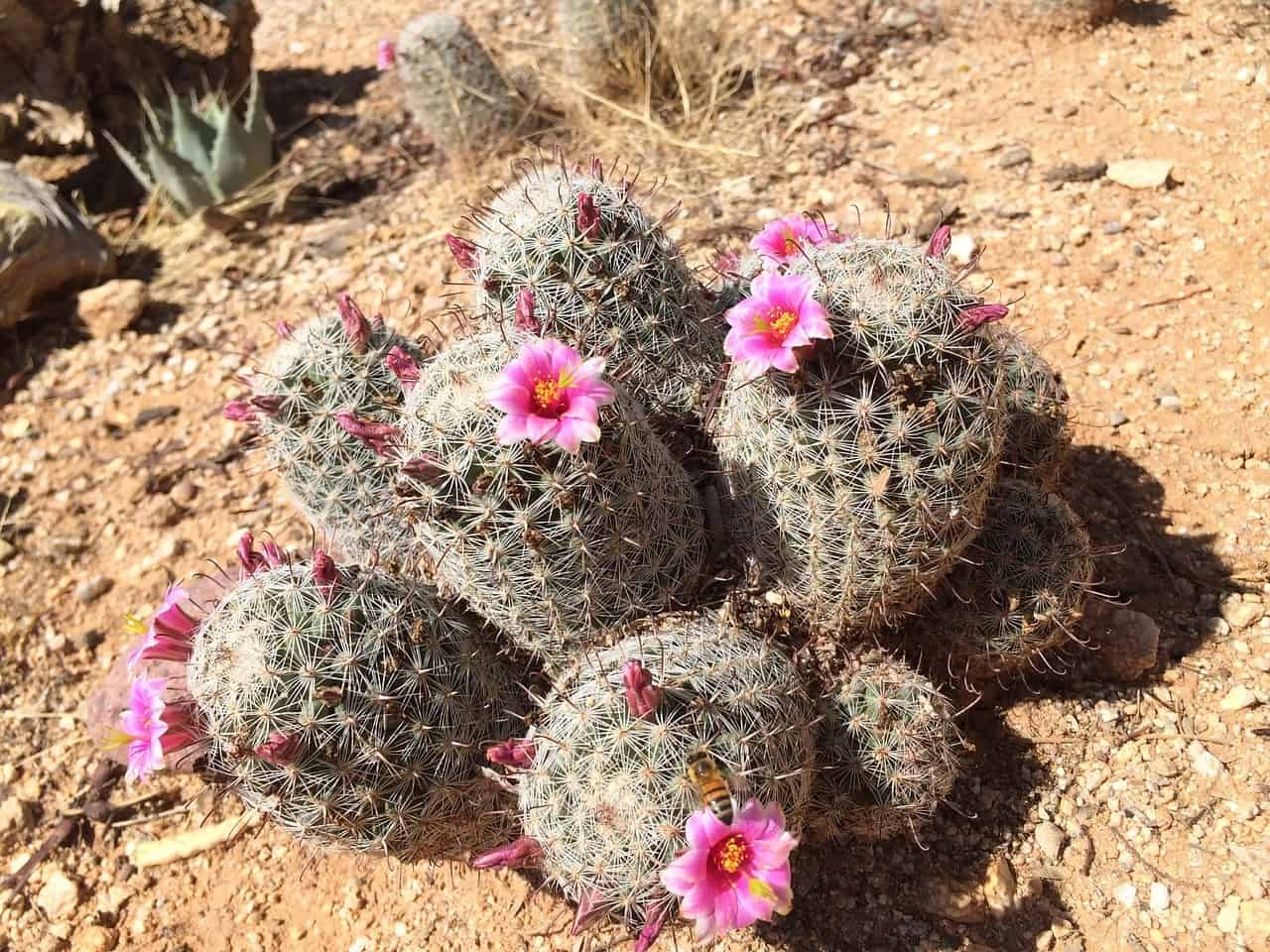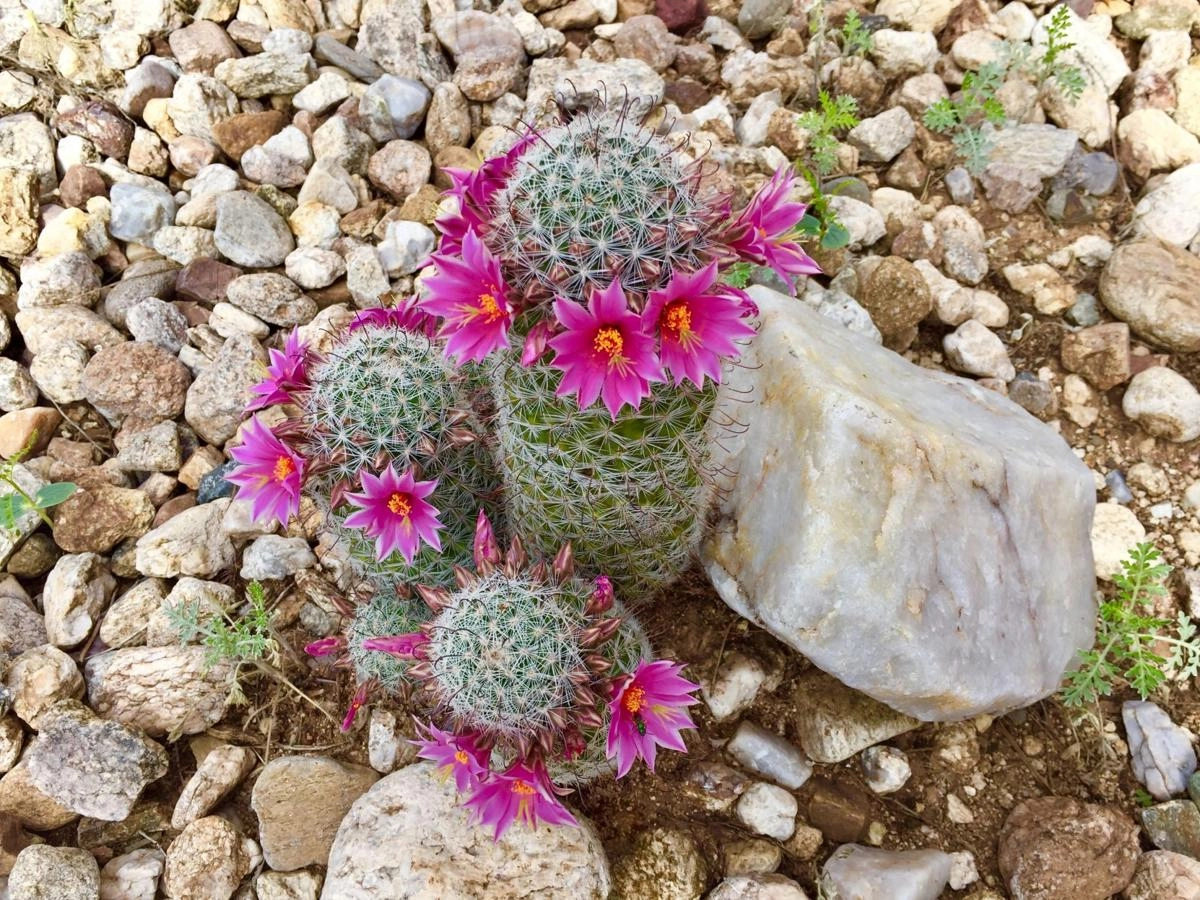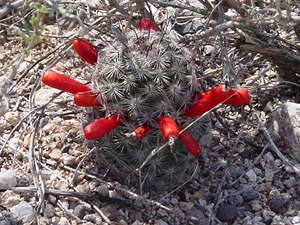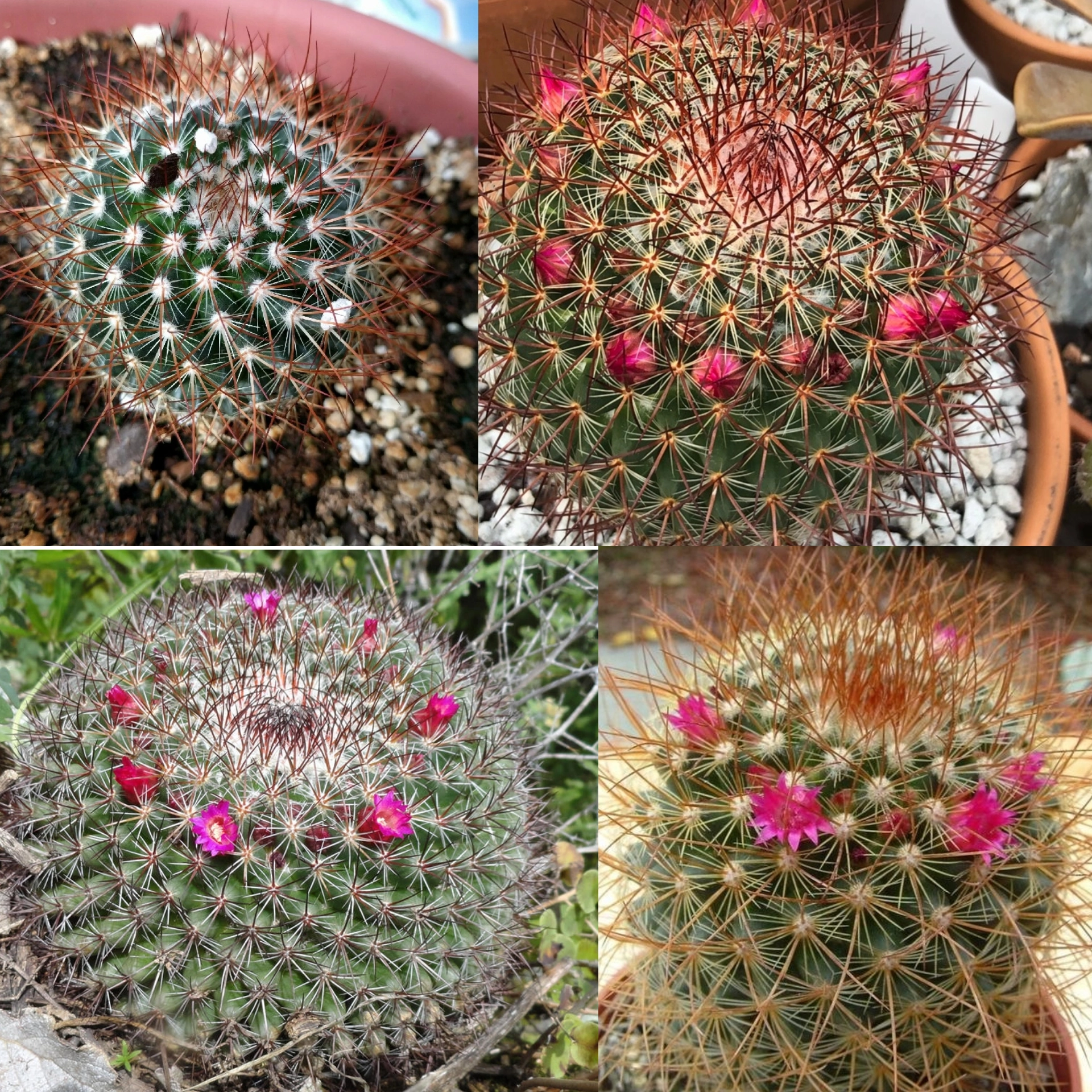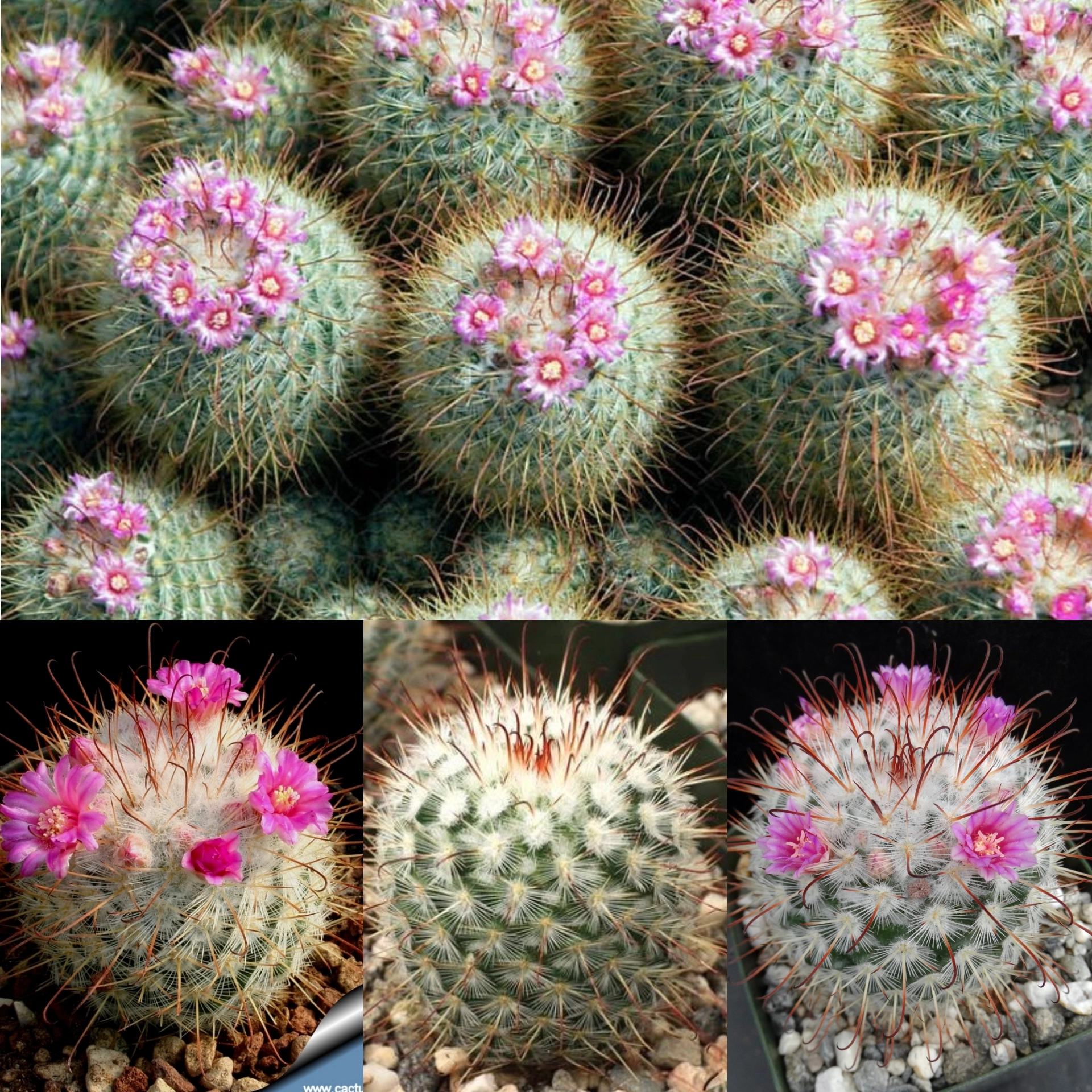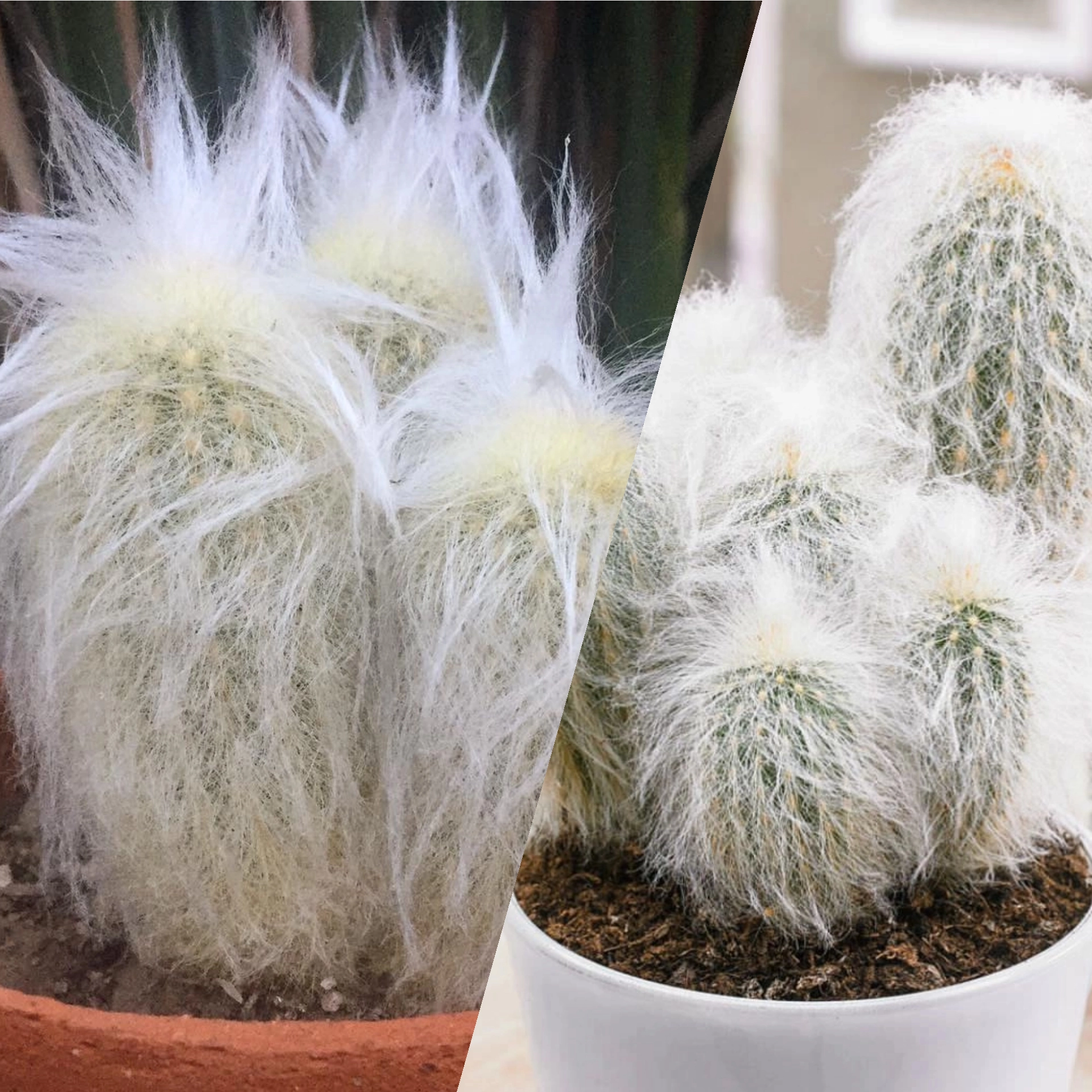Pincushion Cactus the Mammillaria is one of the largest genera in the cactus family which is composed of about 200 known Species and Varieties well recognized.
The most common name used for this species of cacti plant is “Pincushion Cactus”.
Also, its Numerous species are commonly known as Globe Cactus, Birthday Cake Cactus, are closely related genus Escobaria.
Most of the Mammillarias grow natively in Mexico, but some of these Cacti Plants grow naturally in the southwest United States, Caribbean, Colombia, Venezuela, Guatemala, and Honduras.
Pincushion Cactus genus of Mammillaria is the main genus while there are many types of species under it. Which will be discussed deeply.
Physical Characteristics

These Cacti Plants are the best of the beautifying Cactus Plants, which are attractive and Eye Catching. The physical beauty of these Plants makes any viewers Jaw – Drop.
The most special feature of the genus is the possession of an “areole” which means (small area bearing spines or hairs on a cactus).
In addition, These two parts of the Pincushion Cactus clearly separated as one occurring at the “apex” of the tubercle – ( small rounded projection on the cactus stem, arranged around a stem in crisscrossing spirals on the Cacti Plant) the other at its “base” – (bottom part)
Further, The apex part is spine bearing, and the base part is always spineless, but usually bears some bristles or woolly hair around these Cacti Plants.
Moreover, The bottom part of the areole bears attractive flowers and fruits, and it is a branching point.
The apex part of the areole does not carry any flowers, but in certain conditions, they can function as a branching point as well.
Growth Patterns
The pincushion Cactus plant is a perennial that is most often found in heavily grazed grasslands and woody scrub.
These Cactus plants usually are small in size, the stems grow from 1 cm to 20 cm in diameter and in a height from 1 cm to 40 cm.
The roots of the Cacti Plants are fibrous and fleshy.
While the Pincushion Cactus Flowers are funnel-shaped and grow from 7 mm to 40 mm or even more in length and diameter. These species of Cacti Plants are blessed with attractive flowers of white and greenish to yellow, pink, and red in color, and often with a darker mid-stripe.
The Pincushion Cactus Fruit is berry-like in outer appearance, elongated, and usually red but sometimes these cacti plants are white, magenta, yellow or green.
Some species of these Cacti Plants have the fruit fixed into the plant body. The Pincushion Cactus Seeds are black or brown in color and grow from 1 to 3 mm in size.
How To Care Of The Pincushion Cactus?
Growing these Cacti Plants is a very easy process but proper care should be taken by the gardener if the Cacti Plant is grown indoors. These are the main requirements for caring for the Cactus Plant;
1. Heat
These species of plants are drought tolerant and native to the arid upper Sonoran desert. They are small in size but these Cacti Plants that make excellent additions to succulent beauty displays.
2. Temperature
The Temperatures should be between 50 and 75 F. (10-24 C.) for these Cacti Plants as they spread around the small gravel base of the plant out to the root area will act as compost to prevent rotting of stems.
3. Soil
The soil for a Pincushion Cactus needs to be well-drained and rough. The soil needs to be dry out between watering, which is best accomplished with sandy soil at the top.
The Cactus Plants turns dormant – ( asleep) in the winter period and needs no additional irrigation until the spring season.
In addition, Potted Cacti Plants do well in glass-less clay pots, which allow extra moisture to evaporate.
4. Exposure To Sunlight
When the Cactus is kept indoors then should be sure to set up a location in a room with a south-facing window during the wintertime, where Sunlight is reached.
This setting should provide the most sunlight to the Cacti plant. A window location is usually a bit cooler than the rest of the rooms indoors.
And this cool temperature is necessary during the winter months to spur (encourage) the Cactus to bloom during the growing season.
In the spring season and the summertime, according to different locations the Cacti plant needs most light and heat of the sun as its energy.
Giving the Pincushion Cactus plant an outdoor vacation in direct sunlight is a good idea to prevent health issues to the plant.
5. Watering Recommendation
There are two rules to be followed when Pincushion Cactus Watering.They are;
How Often Should The Pincushion Cactus Be Watered Indoors?
During the growing season of the Cacti Plant, the top couple of inches of the soil should be kept dry before watering. Then, Water the Cacti Plants completely and allow excess water to run off.
If the plant has a drip tray (a flat tray with tiny holes), this should be empty. These Cacti Plants should never stand in water.
How Long The Pincushion Cactus Can Withstand Without Watering?
These species of Mammillaria do not need water in the wintertime. The plant should only be watered about once a month, and then decrease Pincushion Cactus Watering and Just give the Cacti Plant enough water to prevent it from wrinkling up.
More importantly, Be sure to keep Cacti Plant at about 50° degrees Fahrenheit during the winter season and provide plenty of indirect sunlight.
6. Fertilizing
If the Cacti Plant is grown indoors then, the plant can be provided with a specially formulated cactus fertilizer or a very weak solution of houseplant Fertilizer which is low in nitrogen and high in potassium and phosphorus is safer than the Pincushion Cactus.
Most important is that, the plant mustn’t be overfed by the fertilizers as this will encourage green growth and discourage blooming in the Cacti Plant.
How To Propagate The Pincushion Cactus?
The Pincushion Cactus can be propagated in two simple ways. Such as;
1.Offsetting The Plant.
2. Seedlings Planting.
1. Pincushion Cactus Offset Method
When the Cacti Plants is offset, it needs to be plucked from the mother plant. And this needs to be done with the utmost care, without hurting the plant or hurting the plant with hands.
The best is to use gardening gloves considering the safety of the Cacti Plant.
Then, allow the cut part of the Cacti Plant to dry up for a few days and pot the baby Plants in a well-draining soil mixed pot or container.
2. Pincushion Cactus Seedling Method
In the Seedling Method, the process should start off in the spring season. These are the easy and quick techniques to follow in this Pincushion Cactus Propagation. They are;
- Use a cacti-mix-filled flat to plant the baby cactus.
- Then, Sow the seeds on top of the mix and lightly cover them with sand.
- Afterward, keep the top moist and store this set up in a warm place.
- Furthermore, check the temperature and the ideal temperature to grow the baby cactus plant should not be less than 21°C(69.8°F).
- Finally, Remember to be watering the mix so that the seeds don’t dry out.
Varieties Of Pincushion Cactus
As already mentioned, this species of Cacti Plants is the largest genus of Cactaceae and these Pincushion Cactuses are composed of large varieties of its species.
These are some of the main and most common types of this species of cacti plants which are similar to each other.
1. Pincushion Cactus Arizona
This is one of the most commonly known Pincushion Cactus Type. This variety of Cactus is known as Mammillaria Grahamii or Mammillaria Microcarpa.
And the most common names used for the Pincushion Cactus Arizona are, Graham’s Nipple Cactus, Arizona Fishhook
Physical Structure Of The Pincushion Arizona
This cactus plant naturally consists of hooked stems and the flowers of these species of cactuses are pink or lavender in color.
These species of Flowers grow usually in April and May and these Cacti Plants also consist of long, thin, red fruits.
Growth Characteristics Of The Pincushion Arizona
2. Strawberry Pincushion Cactus
Physical Structure The Strawberry Pincushion Cactus
Growth Characteristics Of The Strawberry Pincushion Cactus
3. Spiny Pincushion Cactus
Spiny Pincushion Cactus is well known by its scientific name Mammillaria Spinosissima
This species of Flowering Cacti Plants of the cactus family of Cactaceae natively grows in the central Mexican states of Guerrero and Morelos.
Physical Structure Of The Spiny Pincushion Cactus
These are cylindrical and elongated plants similar to all Types of Pincushion Cactus that grow up to about 30 centimeters (12 inches) tall and 10 centimeters (3.9 inches) wide. These Cacti Plants reach full height after five to ten years of their survival.
The spines of Spiny Pincushion Cactus are red-brown or white in color, with cream-colored radials, and consist of attractive pink-colored funnel-shaped flowers that grow in a ring-like structure around the apex (tip) of the stem to approximately 2 centimeters (0.79 inches) long.
Growth Characteristics Of The Spiny Pincushion Cactus
These species of Cacti Plants grow low on the ground as solitary (one lonely plant ) or in clusters ( as groups ), and its flowers produce generally bright red berries which are the Spiny Pincushion Cactus Fruits that are club-shaped, smooth, and juicy.
4. Rose Pincushion Cactus
Mammillaria Zeilmanniana is one of the most beautiful Mammillaria cacti plants species. It is a general rule that this Pincushion Cactus Type does not bloom until they survive for several years.
And the Flowers of these species are Red or Pink. These plants produce a mixture of deep carmine-red Flowers while being still quite young and small in a growth period.
Physical Structure Of The Rose Pincushion Cactus
When these Cacti grow usually they grow about 6cm (2.3 inches) in height and 5cm (2 inches) in the width across.
A four-year-old specimen of these cacti plants is likely to fill a 10cm (4 inches) container. The tubercles of these Cacti species are 6mm (2.3 inches) in height and each areole is composed of some 15 to 18 white radials.
Further, these cacti plants consist of 2 to 4 central brown spines, which are all about 1 to 2cm long. And the central of these Plant is hooked.
Growth Characteristics Of The Rose Pincushion Cactus
The young Rose Pincushion Cactus naturally grows solitary ( alone ) but they form a group of individual nearly globular stems slowly, which are glossy green in color
These Flowers of these Cacti Plants during the summer sometimes followed by brightly colored fruits. The flowers, placed in a circle close to the apex, originate from the aureola at the base of the tubercles – [a small rounded projection on the cactus stem.
That formed from the remaining large leaf bases around the cacti stems in crisscrossing spirals], bell-shaped, with a diameter of 1.8-2 cm (0.7-0.8 inch) and keep the cacti plant for almost one week in until it blossom lasts in the whole summer season.
5. Rainbow Pincushion Cactus
The Rainbow pincushion Cactus is another significant variety of these plants. The Scientific name of this species of Cacti Plants is, Mammillaria Rhodanthus, Mammillaria Neomammillaria Rhodantha. And these species are native to Central Mexico, as the native inhabitant of Mammillaria genus in Mexico.
Physical Structure Of The Rainbow Pincushion Cactus
These cacti plants are composed of a dark green body and solitary (sometimes lonely as these plants produce suckers) that reach about 3 cm in height. The tubers – (used as a storage organ for nutrients gained) that are 12 mm high and possess some white wooly in the axis – ( between the upper side of the stem and a leaf, branch,) of the upper part of the plant.
The Flowers of this Cacti Plants are composed of 30 yellow radial spines, that are about 1 cm in length and 6 longer dark central spines curved towards the apex ( peak of the Cacti Plant ).
Growth Characteristics Of The Rainbow Pincushion Cactus
The Cacti plant’s showy fuchsia – [ The genus of flowering plants that consists of mostly shrubs or small trees ]. Of pink flowers of the Rainbow Pincushion Cactus are 1.5 cm in diameter. And this type of cacti plant produces fruits in whitish color.
The Fruits of this species of Cacti Plants are used in pots for terraces and patios, as a houseplant, greenhouse, in the rockery, and used in cactus and succulent gardens, as these Cacti species are so beautiful and eye-catching.
Mammillaria Rhodantha prefers direct sun exposure, when growing indoors especially, in places next to a window that receives several hours of sun. On the other side, In the winter season, the temperature of these plants should not be less than 2 ºC, these characteristics are similar to all the stated varieties of this species.
The simple and quick propagational method for this variety of Cactus is the Seedling method, (sowing the seed) which is most fair and gives good results in the spring season.
The Rainbow Pincushion Cactus need no pruning which means the Propagation method of cutting a part of the plant then growing it.
These Cacti Plants are quite resistant to pests but sensitive/weak to excess watering.
6. Silver Pincushion Cactus
Pediocactus sileri is a rare species of cactus in the Mammillaria genus and is known by the common names as, Silver Pincushion Cactus and gypsum cactus (or gypsum plains cactus).
This rare species of cactus plants are also native to southwestern Utah and northwestern Arizona in the United States.
Physical Structure Of The Silver Pincushion Cactus
This cactus plant is egg-shaped or sometimes cylindrical in shape and is short branched species. These plants grow up to 25 cm in height and about 11 cm wide.
The surface of the Silver Pincushion Cactus is bumpy with areoles that are covered in hairs or wooly fibers. Each areole is of 3 to 7 main spines which are black to gray or white in color, and they grow near the base of the cactus body reaching up to 3 cm long.
Further, Each areole has many smaller white spines that are 1 or 2 cm long. Spines around the base of the cactus plant may help to anchor/ stand steady on the soil.
Furthermore, The cactus flowers frequently bloom in April and May. These flowers grow up to 2 cm long and 3 cm in wide.
Another, special characteristic this cacti plant has is its white-margined brown outer tepals – (The part of the outer whorl in the Cacti Flower which has no differentiation between petals and sepals) and purple color veined yellow inner tepals.
Moreover, The fruit of this rare species is yellow-green in color and just over 1 cm long.
Growth characteristics Of The Rainbow Pincushion Cactus
It is limited to a specific type of soil, and they usually grow as individual plants that are often spaced far apart.
In addition, The fruit of this rare species of Cacti Plants is yellow-green in color and just over 1 cm long.
Moreover, these species of Cacti Plants are threatened by a number of human activities such as off-road vehicle use, poaching – ( illegal hunt or caught ), and Uranium mining. This is a federally listed threatened species of the United States.
7. Silken Pincushion Cactus
Mammillaria bombycina,the Cacti Plant commonly known as the Silken Pincushion Cactus, is a species of these types of the Cactaceae family.
These species of Cacti Plants too are native in Jalisco and Aguascalientes in the western central of Mexico as same as the other Cacti Plants Types.
But, these Cacti plants are illegal to collect or grow at home so, the wild population is considered to have an unprotected risky status.
Physical Structure Of The Silken Pincushion Cactus
This plant grows up to 20 cm (8 inches) in height and grows with a sense of white hairs between the tubercles which have white radial and brown long central spines, and the flowers are 1.5 cm across
Growth Characteristics Of The Silken Pincushion Cactus
These cacti plants spread indefinitely through their offsets (baby plants). While, the base part of the Cactus, is surrounded by downy white hairs, and has short white spines and much longer brown curved spines.
Circular groups of deep pink cacti flowers, which are born on the upper surface of the cacti plant in the spring and summer seasons.
8. Sneed Pincushion Cactus
Escobaria sneedii or the Coryphantha sneedii is a rare species of Cactus commonly known by the names Sneed’s Pincushion Cactus and Carpet Foxtail Cactus.
This type of Cacti plant natively grows in the Chihuahuan Desert, in New Mexico, Texas and Chihuahua also, Some of these Cacti plants species grow in Arizona as the other cacti plants.
Physical Structure Of The Sneed Pincushion Cactus
This species is a small-sized cactus growing up to about 27 cm in height, but sometimes they grow few centimeters above ground level, the rest of the stem buried in the ground.
The species may branch in a large number, even when these Cacti Plants are small and immature. The Cacti plant is covered by patches of bright white spines, each patch may have about 100 spines.
The cactus plant blooms in the spring season which bears about 1 to 3 centimeters of flowers long as the top of the Cactus body.
Growth Characteristics Of The Sneed Pincushion Cactus
The spines of the Cacti Plants may be tinted with yellow, pink, purple, or brown. Also, They may have dark tips and as the cactus grow old and the spines turn to darken to gray and even black.
The shape of these cacti plants straight spines that spread from the areole. These cactus plants bloom in the spring season.
The Flowers can vary in color. It can be bright to pale pink, white to off-white, greenish, or brownish in color.
Each tepal – ( The part of the outer whorl in the Cacti Flower which has no differentiation between petals and sepals) of the flower may have a darker midstripe of any color.
The Fruits of the cacti plant generally are either red or green in color, usually tinged with other colors, and grow up to 2 cm in length.
Where To Get Pincushion Cactus For Sale?
All the Pincushion Cactus Types can be bought online very easily and quickly through the most popular Online Shopping Site Of Amazon.
1. Pincushion Cactus Arizona
2. Spiny Pincushion Cactus
3. Rose Pincushion Cactus
4. Rainbow Pincushion Cactus
5. Silver Pincushion Cactus
6. Silken Pincushion Cactus
7. Sneed Pincushion Cactus
The Most Contrasting Conflicts Of Pincushion Cactus
As already discussed, these Cacti plants are the largest genus in the Cactaceae family.
As there are many varieties of species in these cacti plants, there are some other cacti species which are looking same the types of Pincushion Cactuses.
And they arise confusion among the readers as whether other Cacti Plants too are the same genus.
1. Golden Barrel Cactus vs Pincushion Cactus
The most increasing confusion among the readers is, whether “Golden Barrel Cactus ” the species of Pincushion Cactus.
This is an uprising question among the many readers, and the Answer is – “Golden Barrel Cactus” is totally different.
Differences
- Golden Barrel Cactus is the species of Echinocactus Not the species of Mammillaria.
- Golden Barrel Cactus is composed of rough spines, Not soft hairy spines.
- yellow flowers appear in summer around the crown of the Golden Barrel Plants, after twenty years or so, But in Pincushion Cactus Flowers grow infrequent short time period.
2. Peruvian Old Man Cactus Vs Pincushion Cactus
Confusion:
Are the Peruvian Old Man Cactus and the Pincushion Cactus the same species?
Answer:
- Peruvian Old Man Cactus is the species of Espostoa Lanata, Not the species of Mammillaria.
- Peruvian Old Man Cactus is a large-sized cacti plant while, Pincushion Cactus is a small-sized species of plant.
- Peruvian Old Man Cactus branches after several years, But Pincushion Cactus grow both as lonely plant or as groups.
- Peruvian Old Man Cactus is composed of a wooly cotton-like coat on the surface while the Pincushion Cactus are with small thorns and spines.
There are many cacti plants similar to these cactus family but above mentioned are the main confusion among the readers.
Summing up
- The longest chained genus of the Cactaceae family is Mammillaria.
- These are small-sized, Flowering Cacti Plants.
- The plants are composed of spines and circular in shape.
- The native place of growth is in Mexico and some of its related regions.
- When these Cactuses are grown outdoors naturally they grow depending on their inhabitant.
- But, when grown indoors proper requirements need to be provided like, adequate amount of water, sunlight, fertilizer, temperature, and moisture.
- These species of Cacti Plants can be Propagated through the Seedling and Offsets method.
- Even though there are many species of Cacti Plants under, readers hey confused of finding out proper details regarding this genus because of its vast types of Cacti Plants.
Through the above discussion information, it will be clear how complex a succulent family could be, specially Mammillaria.

